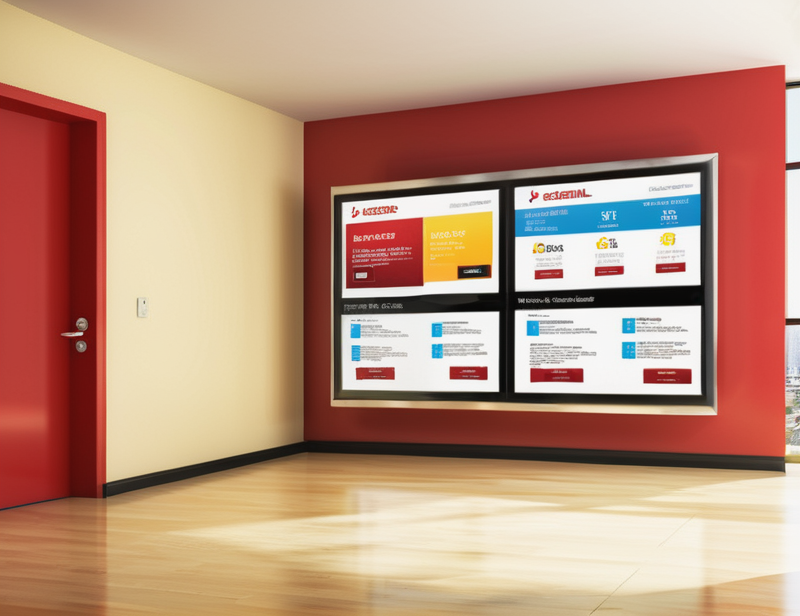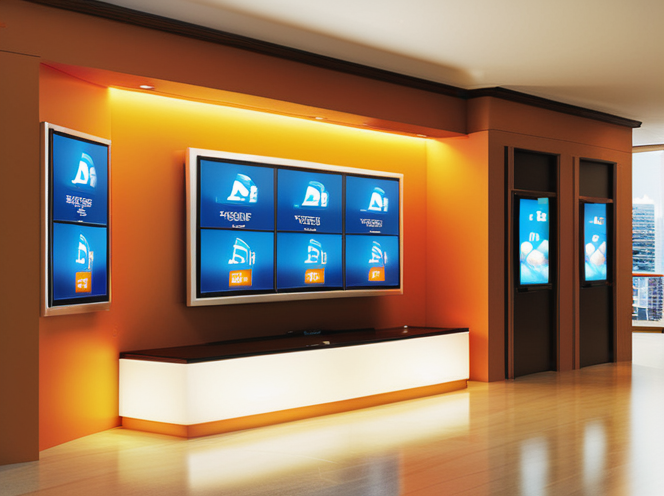Imagine walking into a school where classrooms, hallways, and libraries come alive with vibrant, interactive displays. Instead of cluttered bulletin boards or outdated posters, you see real-time announcements, engaging visuals, and tools that make learning dynamic and exciting. That’s the power of digital signage in education with commercial displays.
Whether it’s guiding students with digital signage solutions in a sprawling campus or enhancing engagement with touch-enabled displays, this tech is reshaping how schools communicate and inspire. It’s not just about looking modern—it’s about creating smarter, more connected learning spaces that truly benefit students and staff alike.
Curious how it works and what makes it so impactful? Stick around as we dive into real-world examples, benefits, and tips to bring this transformation to life.
TL;DR: Digital signage is revolutionizing education, turning traditional spaces into dynamic hubs of engagement and information sharing. Ready to transform your campus? Let’s explore how.
The Importance of Digital Signage in Education
Digital signage for schools is becoming a game-changer in how educational institutions communicate. From preschool to universities, this technology helps schools share important information quickly and efficiently. Instead of relying on outdated bulletin boards or paper flyers, schools can use vibrant screens to grab attention and keep everyone informed.
One of the biggest benefits of digital signage is the flexibility of digital signage content. Schools can easily update announcements, promote upcoming events, or share student achievements. It’s also a great tool for delivering emergency alerts in real-time, ensuring safety across the campus.
Beyond announcements, digital signage can enhance school spirit by showcasing team victories, academic successes, or creative projects. Whether it’s in the hallways, cafeteria, or library, these screens make learning spaces feel more connected and engaging within educational environments.
In today’s fast-paced world, digital signage is the solution schools need to keep communication simple and effective.


Benefits of Digital Signage for Educational Institutions
Digital signage is more than just a tool for sharing information—it’s a way to transform the educational experience for students, staff, and visitors alike. With eye-catching screens and interactive features, schools can create engaging content that grabs attention and keeps people informed.
One key benefit is the ability to easily update or revise content. Whether it’s sharing a last-minute schedule change, promoting upcoming events, or celebrating student achievements, digital signage makes it simple to keep your message fresh and relevant.
For students, digital signage can boost engagement and motivation. Displaying creative visuals, interactive lessons, or even fun trivia can make learning more exciting. Displaying content in various formats can further enhance engagement and streamline communication. It’s also a way to connect schools to the global stage by incorporating modern teaching methods and up-to-date resources.
From helping students navigate campus to creating a more dynamic learning environment, digital signage is a powerful tool that benefits the entire school community. It’s efficient, modern, and designed to make education more accessible and enjoyable for everyone.




Implementing Digital Signage in Educational Institutions
Implementing digital signage in educational institutions can be a game-changer for effective communication, student engagement, and campus navigation. With the right digital signage software, schools can create a seamless and interactive experience for students, staff, and visitors. The first step is to identify the goals and objectives of your digital signage implementation. Are you looking to improve communication, enhance student engagement, or increase campus safety? Clearly defining your goals will help guide your decisions throughout the process.
Conducting a thorough needs assessment is crucial. Determine the type of digital signage solution required, including the number of screens, display locations, and content requirements. This will ensure that your digital signage meets the specific needs of your institution. Choosing user-friendly, scalable software that integrates with your existing systems and infrastructure is also essential. This will make it easier for staff to manage and update content, ensuring that your digital signage remains effective and relevant.
Developing a content strategy is another key consideration. Your content should be a mix of educational, informative, and engaging material, such as school events, announcements, and emergency alerts. This will keep your audience interested and informed. Additionally, ensure that your digital signage solution is accessible and inclusive for all members of the school community, including those with disabilities. By considering these factors, you can implement a digital signage solution that truly enhances the educational experience.

The Role of Digital Signage in Campus Navigation
Digital signage plays a crucial role in campus navigation, helping students, staff, and visitors find their way around the campus. With interactive digital signage, educational institutions can provide a more engaging and user-friendly experience for campus navigation. One of the most effective uses of digital signage is providing interactive campus maps. These maps allow users to search for specific locations, such as buildings, classrooms, or amenities, making it easier for everyone to navigate the campus.
Displaying wayfinding information is another important function. Digital signs can provide directions to specific locations, building names, and room numbers, ensuring that everyone can find their way quickly and easily. Real-time information on campus events, such as lectures, meetings, and conferences, can also be displayed, keeping everyone informed about what’s happening on campus.
Digital signage can also provide information on campus amenities, such as food outlets, libraries, and recreational facilities. This helps students and visitors make the most of the resources available to them. Additionally, digital signage can promote campus safety and security by displaying emergency contact information and safety protocols. By enhancing campus navigation, digital signage helps create a more connected and efficient educational environment.
Choosing the Right Digital Signage Software
When selecting digital signage software for your school, it’s important to consider the specific needs of your institution and the layout of your facility. Every school is unique, so the software should fit your requirements, whether you need it for a single building or a sprawling campus.
User-friendliness is a key factor. Look for software that is easy to set up and operate, even for staff without technical expertise. Scalability is also important, especially if your school plans to expand its use of digital signage over time. Security should never be overlooked—your software must keep your content and data safe.
App integrations, like Google Slides, are a great way to enhance your digital signage content. They allow you to display lessons, announcements, or presentations directly on your screens, keeping everything streamlined and efficient.
Finally, consider cloud-based software. With remote management and instant updates, you can control your signage from anywhere, making it a flexible and powerful solution for educational institutions.




